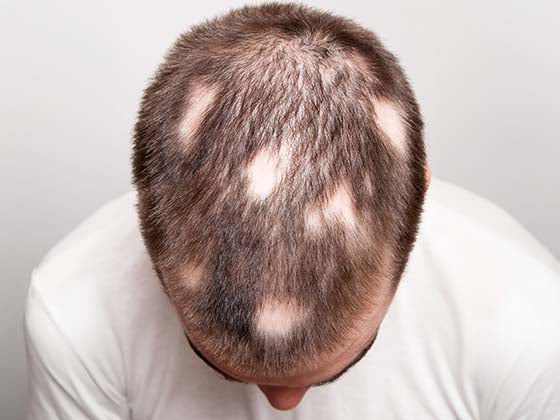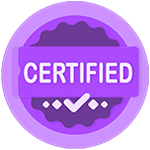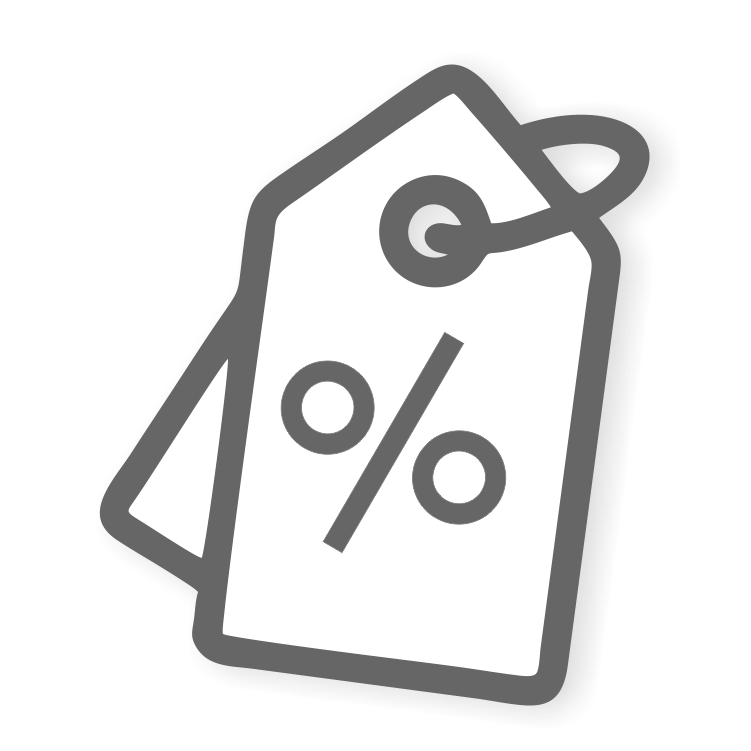Dry shampoo can be a terrific method to refresh your hair in between washes, but like everything else, if used incorrectly or excessively, it can cause hair or scalp problems. In this blog, we will discuss how dry shampoo can harm your hair.
Understanding Dry Shampoo: What It Does to Your Hair

Dry shampoo is a quick remedy that refreshes your hair by absorbing excess oil and giving it a cleaner, fuller look without the need for water. Let's take a closer look at what it does to your hair:
-
Absorbs oil and grease: Dry shampoo is often composed with starch or clay, which absorb the oils produced by your scalp. This helps your hair look less oily and more voluminous.
-
Add volume and texture: The product frequently gives more texture and volume to your hair, making it appear fuller-bodied and less flat. This is why it's a popular choice for folks who have fine or limp hair and need a rapid lift.
-
Cleanse without water: The main advantage of dry shampoo is that it creates the appearance of freshly washed hair without really getting your hair wet. This makes it ideal for folks in a hurry or who wish to avoid a wash for a day or two.
How Dry Shampoo Works: Breaking Down the Ingredients

Dry shampoo removes grease, refreshes your hair, and adds volume without using water. Let's go over the key ingredients frequently found in dry shampoos and how they work:
-
Absorbent powders: These are the primary substances responsible for removing excess oil from your scalp and hair. Cornstarch, rice starch, kaolin clay, bentonite clay, and silica are some of the most frequent. These powders adhere to the scalp and hair, absorbing excess oil and creating a fresh, non-greasy appearance.
-
Alcohol: Alcohol is frequently used in dry shampoo to help it dry fast and avoid feeling too heavy on the hair. It helps the product dissipate fast after application, making your hair feel less greasy. However, alcohol can be drying, which is why it is crucial not to use dry shampoo too frequently, since it might deplete your hair's natural moisture.
-
Fragrance: Most dry shampoos contain fragrance to give your hair a fresh, clean smell. This might range from floral and zesty to more neutral fragrances. While fragranced products might be beneficial, if you have a sensitive scalp or skin, you should exercise caution.
-
Colorants: Some dry shampoos contain pigments or colorants, particularly for darker hair. These pigments help the product blend in with your natural hair color, preventing white or gray residue from appearing in your hair.
-
Conditioning agents: To keep your hair from becoming excessively dry or brittle, several dry shampoos contain light conditioning ingredients such as silicone derivatives or glycerin. These components help to keep the product smooth and manageable after it has been applied.
-
Propellants: Aerosol formulations often contain propellants (such as butane or propane) that aid in the product's release as a fine mist. These gasses enable simple, even application without the need for rubbing or massaging the product.
Benefits of Using Dry Shampoo: Convenience and Time-Saving

Dry shampoo is a major time-saver and offers a lot of convenience for people with busy lifestyles. Here are some of the key benefits of using dry shampoo:
-
Quick refresh between washes: One of the most significant benefits of dry shampoo is its ability to rapidly refresh your hair without wetting it. If you're short on time or don't want to go through the entire washing and drying procedure, dry shampoo can help you clean up your look quickly. Simply spritz or apply to your roots, and it will instantly absorb oil and add volume.
-
Saves time: Washing, drying, and styling your hair can be time-consuming, especially if it is thick or long. Dry shampoo allows you to increase the time between washes while also reducing style time. It refreshes your hair in a fraction of the time.
-
Helps maintain hairstyles: If you've worked hard to get a style, such as curls or waves, dry shampoo can help you keep it for another day or two by freshening your hair without flattening it. It adds texture and volume to your hair, allowing hairstyles to remain longer without the need for restyles.
-
Less harm to hair: Frequent washing and style can be harsh on your hair, causing dryness and damage. Dry shampoo allows you to give your hair a vacation from frequent washing and heat styling while protecting its natural oils and lowering the chance of damage.
-
Adds volume and texture: Dry shampoo isn’t just for oil control—it can also work as a styling product. If you have fine or flat hair, dry shampoo can add volume and texture, making your hair look fuller and more voluminous. This can help create a fuller look without the need for extra styling products.
-
Keeps your scalp feeling fresh: It’s not just about the look—dry shampoo can also help absorb sweat and oils from your scalp, keeping it feeling fresh. This is especially useful for those with active lifestyles who may need to freshen up between workouts or after a busy day.
-
Ideal for color-treated hair: Color-treated hair often requires less washing to preserve the vibrancy and longevity of the color. Dry shampoo helps extend the time between washes, so you can maintain your color for longer while keeping your hair looking clean and fresh.
-
Affordable option: Compared to other styling or hair care treatments, dry shampoo is relatively affordable and can last a long time. It’s an easy, inexpensive way to extend the freshness of your hair between regular washes.
Common Myths About Dry Shampoo: Separating Fact from Fiction

There are a lot of misconceptions about dry shampoo, and while it’s a popular product, some of the myths surrounding it can lead to confusion. Let’s clear up some common myths and separate fact from fiction!
-
Myth 1: Dry shampoo is an alternative to regular shampoo.
-
Fact: Dry shampoo will temporarily absorb oil and freshen your hair, but it is not a substitute for regular shampoo. Overuse can develop buildup on your scalp, resulting in discomfort or plugged hair follicles. To maintain your scalp and hair healthy, you should continue to wash it regularly.
-
Myth 2: You can use dry shampoo every day with no negative consequences.
-
Fact: Using dry shampoo every day to avoid washing your hair may seem like a smart idea, but doing so too frequently might have negative implications. Dry shampoo absorbs oils, but it does not cleanse your hair or scalp. Excessive use can create scalp dryness, and buildup, and make your hair feel burdened down or appear dull. It is better to use dry shampoo sparingly and alternate it with regular washing.
-
Myth 3: Dry shampoo only works for people with oily hair.
-
Fact: Although dry shampoo is excellent for absorbing excess oil, it works for all hair types, not just those with oily hair. People with fine, flat hair can benefit from the added volume and texture it provides, while those with dry or curly hair may find it useful to freshen up between washes without losing too much moisture. However, those with particularly dry scalps should be cautious about using it too frequently.
-
Myth 4: Dry shampoo causes hair to fall out.
-
Fact: Dry shampoo itself doesn’t directly cause hair to fall out. However, if you use it excessively without properly cleansing your scalp or hair, the buildup of oils and products can lead to clogged follicles, which might contribute to hair thinning over time. The key is moderation and ensuring that you’re still washing your hair regularly to keep your scalp clean and healthy.
-
Myth 5: Dry shampoo makes your hair look fresh and clean like you just washed it.
-
Fact: Dry shampoo can make your hair look fresher and less greasy, but it doesn’t clean your hair. It absorbs oils and can add volume, but it doesn’t remove dirt, sweat, or other impurities that regular shampoo would. While it’s great for refreshing your hair, it won’t replace the deep clean that a regular wash provides.
The Risks of Dry Shampoo: Is Your Hair at Stake?

While dry shampoo can be a convenient and effective way to freshen up your hair between washes, there are some risks associated with overuse or improper application. Understanding these potential risks will help you make informed choices about how to use dry shampoo without compromising the health of your hair and scalp. Here’s what you need to know:
-
Scalp build-up and clogged follicles: Dry shampoo works by absorbing oils and adding volume, but if not properly washed out or used excessively, it can lead to product buildup on your scalp. This residue can clog hair follicles and prevent them from properly shedding hair, leading to scalp issues such as irritation, dandruff, or even hair thinning.
-
Scalp irritation: Some dry shampoos contain alcohol, fragrances, or other harsh chemicals that can irritate your scalp, especially if you have sensitive skin. This can result in itching, redness, or flakiness. Overuse of these products can exacerbate these issues.
-
Dryness and brittle hair: Many dry shampoos contain ingredients like alcohol or other drying agents that can strip your hair of its natural oils. Over time, this can lead to dry, brittle hair that’s more prone to breakage.
-
Lack of proper cleansing: Dry shampoo only absorbs oil—it doesn’t cleanse your hair or remove dirt, sweat, or product buildup. If you’re relying on dry shampoo without proper washing, your hair may not be as clean as you think. This can lead to a dull appearance or even scalp issues if debris is left on your scalp for too long.
-
Hair thinning or loss: If you’re using dry shampoo too frequently or don’t properly clean your scalp, you could be contributing to hair thinning. The buildup of oil, product residue, and clogged follicles can lead to weaker hair and hinder growth. While this is typically a result of overuse, it’s still a risk to be aware of.
-
Inhalation risks with aerosol sprays: Aerosol dry shampoos are typically sprayed as a fine mist, and some people may be concerned about inhaling the particles in the air. While these products are generally safe when used as directed, inhaling the particles—especially if used in an enclosed space—could irritate the lungs or respiratory system over time.
-
Environmental impact: Many aerosol dry shampoos come in cans that can contribute to environmental waste, especially if they’re not recyclable. Some formulations may also contain ingredients that aren’t eco-friendly.
-
Residue on dark hair: A common issue with dry shampoos is the white residue they can leave behind, especially on darker hair. This residue can be hard to blend and can make your hair look dull or powdery.
Scalp Health and Dry Shampoo: What You Should Know

Scalp health plays a crucial role in maintaining healthy hair, and while dry shampoo is a convenient way to freshen up between washes, it’s important to use it in a way that doesn’t compromise your scalp’s well-being. Here’s what you should know about how dry shampoo can affect your scalp health, along with some tips to keep things in balance.
-
Buildup on the scalp: Over time, dry shampoo can leave a layer of residue on your scalp if it’s not properly washed out. This residue can mix with oils, sweat, and dead skin cells, leading to buildup that can clog hair follicles. Clogged follicles can potentially lead to scalp irritation, dandruff, or even hair thinning due to blocked growth cycles.
-
Dryness and irritation: Some dry shampoos contain alcohol or other drying agents, which can strip your scalp of its natural oils if used too often. This can result in a dry, flaky, or itchy scalp, especially if you already tend towards dryness or sensitivity.
-
Scalp sensitivity and allergies: Dry shampoos often contain fragrances, preservatives, and other chemicals that can trigger scalp irritation or allergic reactions. These can manifest as itching, redness, or even dandruff.
-
Disrupted sebum production: Your scalp produces natural oils (sebum) to keep hair moisturized and protect the skin. Using dry shampoo too often can disrupt this natural oil production. While dry shampoo absorbs excess oil, it doesn’t replace the need for your scalp to maintain a healthy balance of sebum. Overuse could lead to you too oily scalp or too dry scalp, depending on how it reacts.
-
Potential for dandruff: If dry shampoo builds up on the scalp without regular washing, it can lead to dandruff-like flakes. The combination of oil, dead skin, and product residue creates the perfect environment for flakes to form.
-
Lack of proper scalp exfoliation: Scalp exfoliation is key to removing dead skin cells and preventing buildup. When you rely too heavily on dry shampoo, you may neglect your scalp’s need for exfoliation, leading to clogged pores, irritation, and slower hair growth.
-
Discomfort from incorrect application: If dry shampoo isn’t applied correctly, it can create uneven patches or build-up that feels uncomfortable. Scrubbing or massaging it too aggressively can also irritate the scalp.
Signs of Overusing Dry Shampoo: When to Take a Break

While dry shampoo is a terrific method to refresh your hair in between washes, using it too frequently might cause a variety of problems with your scalp. Flaky or itchy scalp, extreme dryness or brittle hair, flat, lifeless hair, scalp buildup or visible residue, increased oiliness or greasiness, hair thinning or shedding, scalp odor, and dull or lackluster hair are all symptoms that you should stop using dry shampoo.
The Impact on Hair Follicles: Long-Term Effects

When used improperly or excessively, dry shampoo can have a significant influence on your hair follicles and overall scalp health over time. While it's a terrific way to refresh up between washes, excessive or inappropriate use might have long-term consequences. Here's a closer look at how dry shampoo can damage your hair follicles in the long run, including clogged hair follicles, scalp irritation and inflammation, disruption of oil production, the possibility of hair thinning, and an increased risk of scalp disorders.
Healthy Alternatives to Dry Shampoo

While dry shampoo is convenient, many natural alternatives can keep your hair looking fresh without the potential downsides of overuse. Whether you opt for powders, essential oils, scalp massages, or regular washes, these healthier alternatives can help you maintain a clean, nourished scalp and hair. The key is finding what works best for your hair type and routine while keeping your scalp in optimal health.
Natural DIY Options: Gentle Alternatives for Fresh Hair

Some simple, natural DIY options:
-
Cornstarch and cocoa powder dry shampoo: Ingredients are 2 tablespoons cornstarch (for oil absorption) and 1 tablespoon cocoa powder (for dark hair). Mix the cornstarch and cocoa powder together in a small bowl. Apply the mixture directly to your roots using a makeup brush or an old makeup brush that you don’t mind dedicating to your hair care routine. Massage it in, focusing on your scalp to ensure it absorbs oil. Brush through your hair to remove any excess powder. If you have lighter hair, you can skip the cocoa powder or use less.
-
Arrowroot powder dry shampoo: Ingredients are 2 tablespoons of arrowroot powder (for oil absorption) and 1–2 drops of essential oil (optional, for fragrance). Mix the arrowroot powder with a couple of drops of essential oil, such as lavender or peppermint (optional). Apply the powder to your roots using a makeup brush, cotton ball, or your fingers. Massage it into your scalp and brush through to evenly distribute it. Shake out any excess powder.
-
Baking soda and essential oils: Ingredients are 1 tablespoon baking soda (for oil absorption) and 1–2 drops of essential oil (such as tea tree, lavender, or peppermint). Mix the baking soda with the essential oils in a small container or jar. Sprinkle a small amount directly onto your roots. Gently massage into your scalp and brush through your hair to remove excess powder. You can also use a fine-tooth comb to distribute the powder evenly.
-
Oatmeal and cornstarch dry shampoo: Ingredients are 2 tablespoons ground oatmeal (soothes and absorbs oil), 2 tablespoons cornstarch (for oil absorption) and a few drops of essential oil (optional). Blend the oatmeal into a fine powder using a food processor or blender. Combine the ground oatmeal with cornstarch in a bowl. Add essential oils if you like. Apply the mixture to your scalp using a soft makeup brush or shake it directly from a container. Massage it into your roots and brush through to remove excess powder.
-
Rice powder dry shampoo: Ingredients are 2 tablespoons rice powder and 1 tablespoon cornstarch (optional, for added oil absorption). Mix rice powder and cornstarch together in a small container. Apply the mixture to your roots using a makeup brush or a cotton pad. Massage the powder into your scalp and brush through your hair to evenly distribute it.
-
Green tea and aloe vera scalp spray: Ingredients are 1/2 cup brewed green tea (for antioxidants and oil control), 2 tablespoons of aloe vera gel (for hydration) and 3–4 drops of essential oil (optional, for fragrance). Brew a cup of green tea and let it cool completely. In a spray bottle, combine the green tea with aloe vera gel and essential oil. Shake the bottle to mix, then spray onto your scalp and hair roots. Massage it into your scalp and let it dry naturally.
How to Maintain Hair Between Washes: Expert Tips

Maintaining your hair between washes can be difficult, especially if you have oily or dry hair, or if you're trying to prolong the time between shampoos to retain natural oils or color treatments. Fortunately, there are some expert suggestions for keeping your hair looking fresh, healthy, and styled without having to wash it every day.
-
Use dry shampoo in moderation: Dry shampoo is the go-to product for freshening your hair between washes. It absorbs excess oil, increases volume, and helps to prevent the greasy appearance that might occur after a few days without washing.
-
Consider scalp massages: Regular scalp massages not only assist in dispersing natural oils through your hair, but they also increase blood flow to the scalp, promoting healthy hair development.
-
Refresh with a scalp spray: A scalp-refreshing spray can help regulate oil and give your hair a clean feel without the need for a full wash. These sprays frequently include substances such as aloe vera, witch hazel, or tea tree oil, which cleanse the scalp and regulate oil production.
-
Rinse with water or herbal tea: If you don’t want to wash your hair with shampoo, you can rinse it with water or herbal tea to remove some of the oils and refresh your hair. Herbal teas like chamomile, green tea, or peppermint can help stimulate your scalp and freshen up your hair without stripping it.
-
Use a silk or satin pillowcase: Switching to a silk or satin pillowcase can help maintain your hairstyle between washes by reducing the friction that causes frizz, tangles, and breakage. This is particularly beneficial if you like to keep your hair styled or want to preserve your hair’s smoothness overnight.
-
Avoid over-touching your hair: Touching your hair throughout the day can transfer oils from your hands to your hair, making it appear greasy faster. Try to avoid constantly running your fingers through your hair or adjusting your style unless necessary.
-
Wear a protective hairstyle: When your hair starts to feel greasy or weighed down, you can use protective hairstyles to keep it looking polished between washes. Braids, buns, or ponytails can help hide any oily roots while still looking stylish.
-
Refresh curls with a curl-refreshing spray: If you have curly hair, you don’t need to wash it daily to maintain volume and bounce. A curl-refreshing spray can help reactivate curls, control frizz, and restore volume.
-
Utilize the power of essential oils: Essential oils like lavender, peppermint, and rosemary can provide refreshing scents and also have scalp-soothing properties. They’re a great way to freshen up your hair without washing it.
-
Limit heat styling: Excessive use of heat tools can make your hair look limp and dry between washes. To maintain your hair’s natural shine and volume, try to limit heat styling to special occasions or once a week.
-
Brush your hair regularly: Brushing your hair doesn’t just help detangle—it also helps redistribute your scalp’s natural oils throughout the length of your hair. This gives your hair a polished look without the need to shampoo.
-
Dry conditioner for extra softness: Dry conditioner is a lesser-known product that can help freshen up your hair, adding softness and shine without weighing it down. It’s especially useful for dry or thick hair types.
Finding the Right Balance: When and How to Use Dry Shampoo

Dry shampoo is an excellent tool for extending the life of your hairstyle and keeping your hair fresh between washes, but it’s essential to use it correctly and in moderation. Apply it sparingly when your hair is slightly oily or needs volume, and always make sure to give your scalp a proper cleanse when necessary. By using dry shampoo mindfully and selecting the right product for your hair type, you can keep your hair looking clean and fresh while maintaining healthy hair and scalp conditions.
Tailoring Your Hair Care Routine: Avoiding Dry Shampoo Damage

Dry shampoo is a powerful tool in your hair care routine, but it’s important to use it thoughtfully to avoid damage. By using it sparingly, massaging your scalp regularly, choosing the right product for your hair type, and giving your scalp regular breaks, you can keep your hair looking fresh while maintaining healthy hair and scalp conditions. Tailor your routine to avoid dry shampoo damage, and your hair will stay vibrant, nourished, and full of life!
















